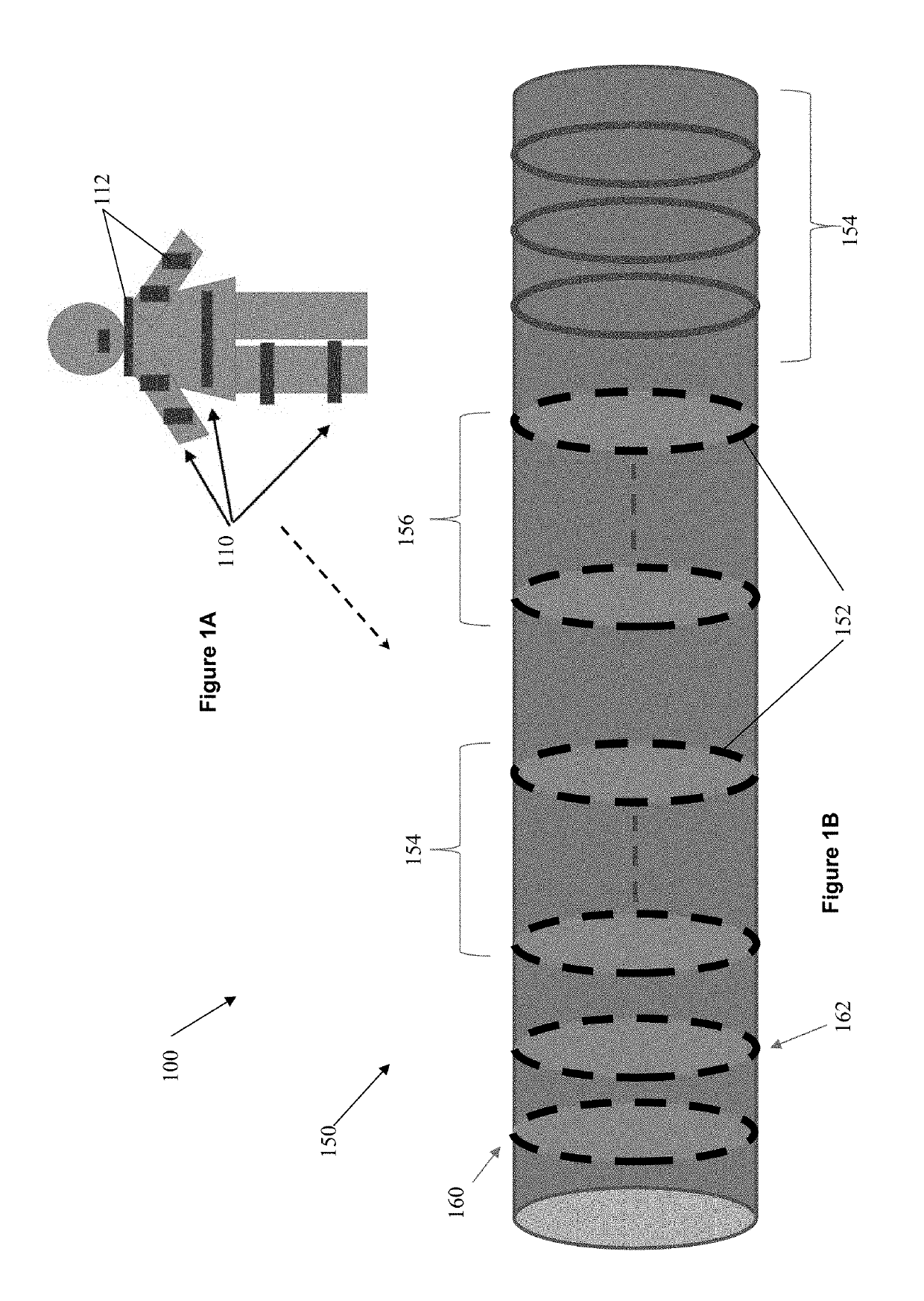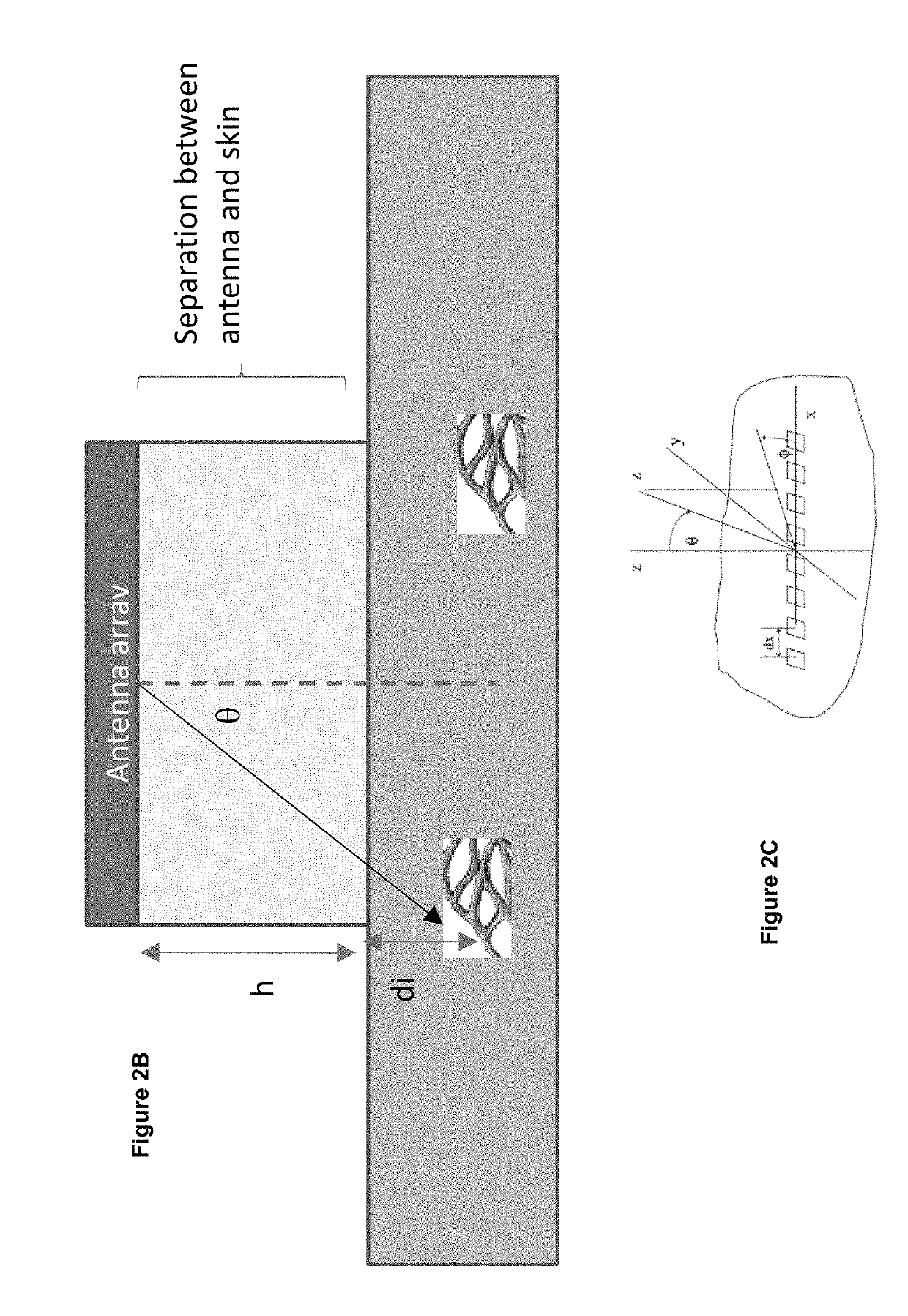Novel non-invasive biological, chemical markers and tracers monitoring device in blood including glucose monitoring using adaptive RF circuits and antenna design
a technology of biological, chemical markers and tracers, applied in the field of systems and methods for processing data received from sensors, can solve the problems of high susceptibility to biofouling, pain for patients, and requirement for continuous calibration
- Summary
- Abstract
- Description
- Claims
- Application Information
AI Technical Summary
Benefits of technology
Problems solved by technology
Method used
Image
Examples
example 1
mbodiments
[0102]To validate the fabricated antenna 2 different approaches will be used: Blood mimicking materials (liquid) and Tissue mimicking materials: wet skin, fat, blood and muscles. Blood mimicking materials may include, but are not limited to: hemoglobin-based oxygen carriers (HBOC) and perfluorocarbon-based oxygen carriers (PFBOC). Tissue mimicking materials may include, but are not limited to: agar-based material or a gelatine-based material.
[0103]In both approaches the blood content will be modified to mimic what will happen in a disease state. For diabetes, different glucose indices will be used in combination with increased concentration of growth factors, lipids, antibodies, and especially drug used to treat diabetes and other related complications accompanying diabetes such as Insulin, statin, ascorbic acid, ACE inhibitors or ARBs, SGLT1 or SGLT2 inhibitors, etc. All of these additions will allow us to study the sensitivity of the designed antenna in the presence of d...
example 2
n Animal Models for Glucose Monitoring that can be Applied to Other Blood Markers and Tracers
[0105]Animal Model Selection
[0106]Murine and rodent models will be used for in vivo sensor performance evaluation.
[0107]Short term assessment: mice and rabbits will be employed permitting the evaluation of multiple sensors for short periods (post-prandial glucose levels and glucose assessment up to 2 days).
[0108]Long term assessment: Pigs that more accurately represent human tissue physiology will be used to obtain accurate sensor performance data for long-term assessment.
[0109]To assess the sensors accuracy performance, animals will be divided into different groups depending on the disease state.
[0110]For diabetes the following groups will be used:
[0111]Group 1: Healthy animals; Group 2: Healthy animals, where blood glucose levels will be artificially altered to achieve glucose concentrations outside of the euglycemic range; Group 3: Diabetic animals; Group 4: Diabetic animals treated with ...
example 3
Trials
[0112]For human antenna / sensor performance evaluation the inclusion and exclusion criteria will be set based on the recommendations set by the American Diabetes Association (ADA), the National Institute of Health (NIH), the Montreal Cognitive Assessment (MOCA), etc., clinical trials standards, (example patients with cognitive impairment will be excluded, patients with respiratory difficulties will be excluded, etc.)
[0113]Healthy subjects, patients with type 1 and patients with type 2 diabetes will be recruited. Follow up using standard invasive glucometer as well as medical testing of HBA1C, lipid profile, etc. will be used.
[0114]Glucose readings will be obtained from both a glucometer (finger prick readings) and from the developed non-invasive glucose sensor to assess how the non-invasive glucose sensor measurements correlate with glucometer readings. 5 to 6 measurements will be recorded daily: (1) Fasting, (2) postprandial glucose (1.5 to 2 hours after consuming a meal), (3)...
PUM
 Login to View More
Login to View More Abstract
Description
Claims
Application Information
 Login to View More
Login to View More - R&D
- Intellectual Property
- Life Sciences
- Materials
- Tech Scout
- Unparalleled Data Quality
- Higher Quality Content
- 60% Fewer Hallucinations
Browse by: Latest US Patents, China's latest patents, Technical Efficacy Thesaurus, Application Domain, Technology Topic, Popular Technical Reports.
© 2025 PatSnap. All rights reserved.Legal|Privacy policy|Modern Slavery Act Transparency Statement|Sitemap|About US| Contact US: help@patsnap.com



